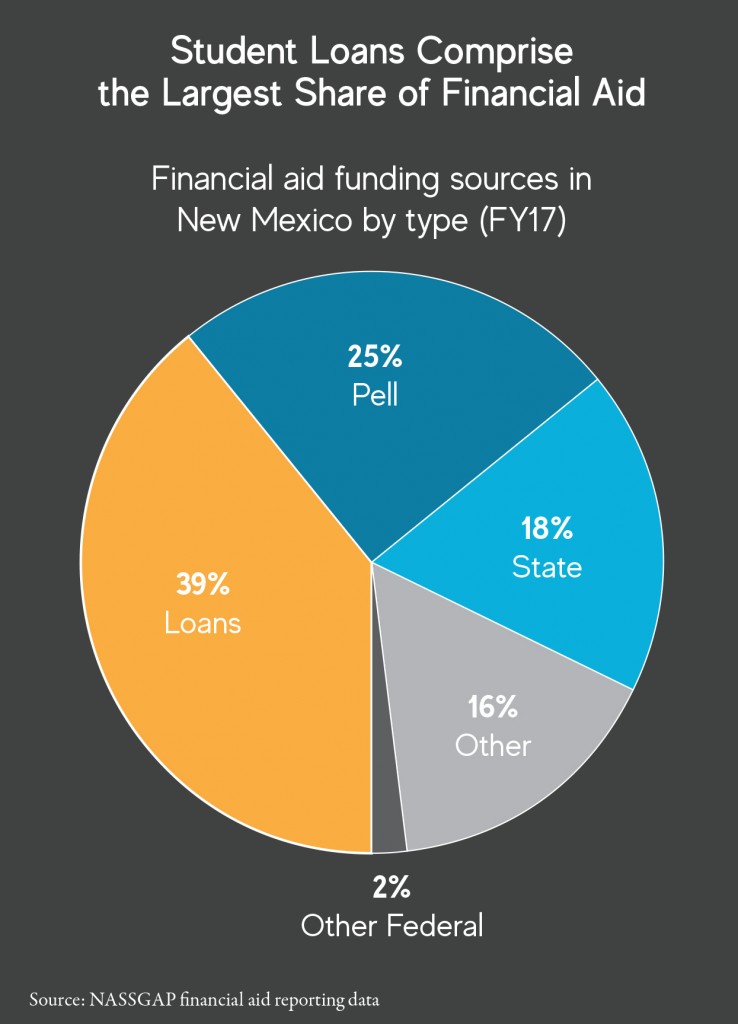 Download this fact sheet (Jan. 2019; 2 pages; pdf)
Download this fact sheet (Jan. 2019; 2 pages; pdf)
Link to the companion report
Support HB 127/SB 81 and HB 146
State Financial Aid is Underfunded and Misdirected
1. Tuition increases have been drastic
- Tuition and fees at our public four-year universities have been increased by 38% since the recession.1
- This is because the state has cut higher education funding by 34% since the recession.2
2. The students who most need state financial aid are not prioritized
- Only 31% of our state aid is targeted to students in need. The U.S. average is 76%.3
- Nearly $16 million in state aid goes to students from families earning more than $100,000 a year, most of whom can afford to attend college without financial aid.4
- The need-based College Affordability Fund has been completely depleted to pay for unrelated state programs.5
3. State aid helps too few part-time, older, and low-income students
- 67% of our state aid comes from the merit-based Lottery Scholarship, which is only for full-time students who recently completed high school.6 This leaves out older students and those who must work full-time while attending college.
- 51% of our college students in public institutions are part-time, but only 32% of our state aid goes to part-time students.7
4. State aid is not enough to cover the unmet need
- The Lottery Scholarship has gone from covering 100% of tuition to covering about 40%.8 This dis-proportionally hurts low-income students.
- Low-income New Mexico students only get $3,600 in Pell Grants per year, on average, which covers only a fraction of actual college costs.9
- Many students must rely on loans to attend school, but New Mexico has the second worst student loan default rate in the nation.10
What New Mexico Can Do
- Re-invest in our public higher education institutions to help stabilize tuition costs and improve college affordability for all.
- Support HB 146 to target more state financial aid to the students who most need it by making the Lottery Scholarship need-based and having it fully cover tuition for low-income students.
- Support HB 127 and SB 81 to increase appropriations and disburse larger awards for the need-based College Affordability Fund to better support part-time, older, and low-income students.
Sources:
-
- (On a per-student FTE, inflation-adjusted basis). Center on Budget and Policy Priorities (CBPP) Higher education funding and tuition data provided to NM Voices, 2008-2018; Unkept Promises: State Cuts to Higher Education Threatens Access and Equity, 2018
- (When looking at inflation-adjusted state spending per FT student equivalent). Ibid
- National Association of State Student Grant and Aid 47th survey report on state-sponsored student financial aid, academic year 2015-16
- NM Higher Education Department data
- NM LFC Fiscal Impact Reports for College Affordability Fund bills
- NM Higher Education Department data (The Lottery Disability Scholarship does provide an option for part-time students but these scholarships represent less than 1% of the student recipients of the funding)
- NM Higher Education Department data; 2016 IES NCES data
- NM Higher Education Department data
- Distribution of Federal Pell Grants by State 2016-17, US Department of Education
- Cohort Student Loan 2014 Default Rate, U.S. Department of Education
A Working Poor Families Project report.
The Working Poor Families Project is funded by the Annie E. Casey Foundation, Ford Foundation, Joyce Foundation, and The Kresge Foundation.
